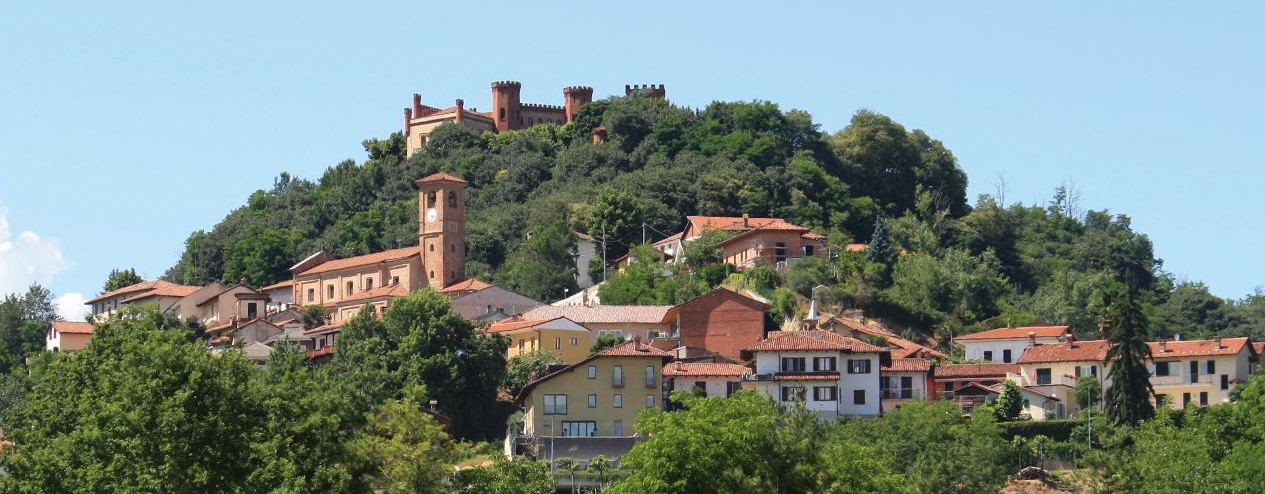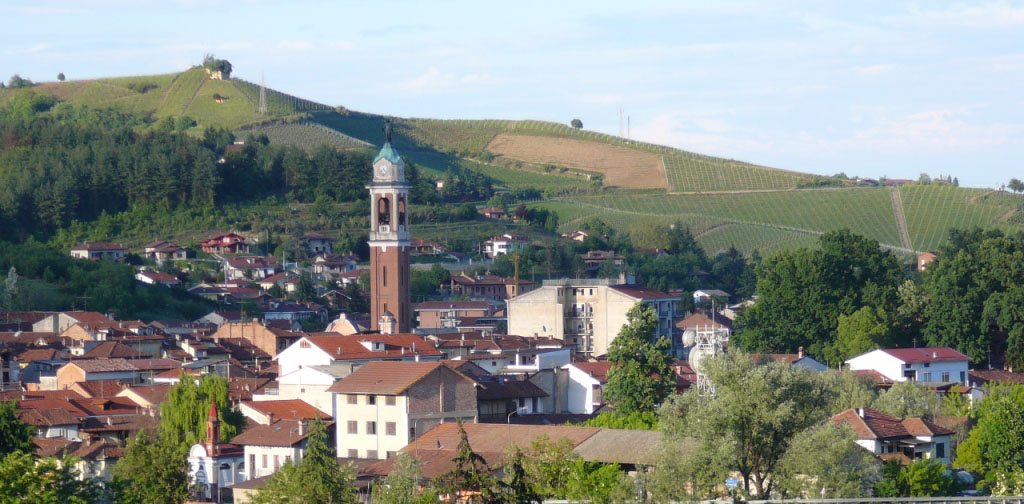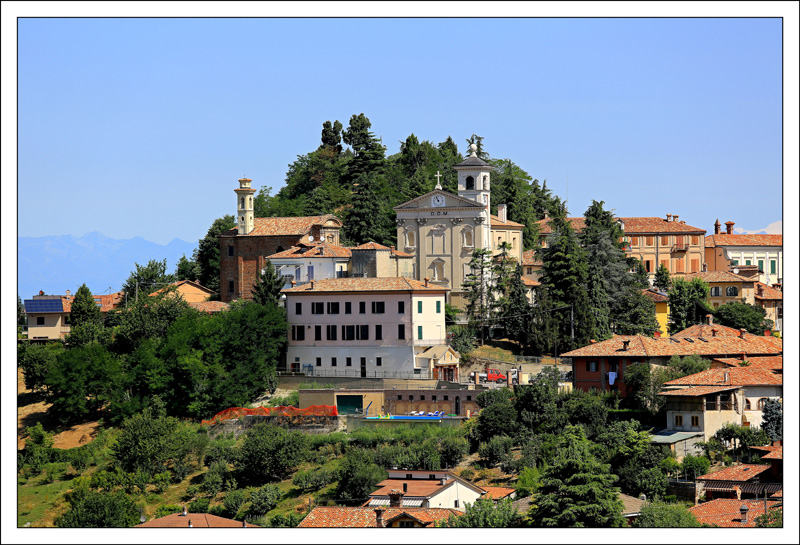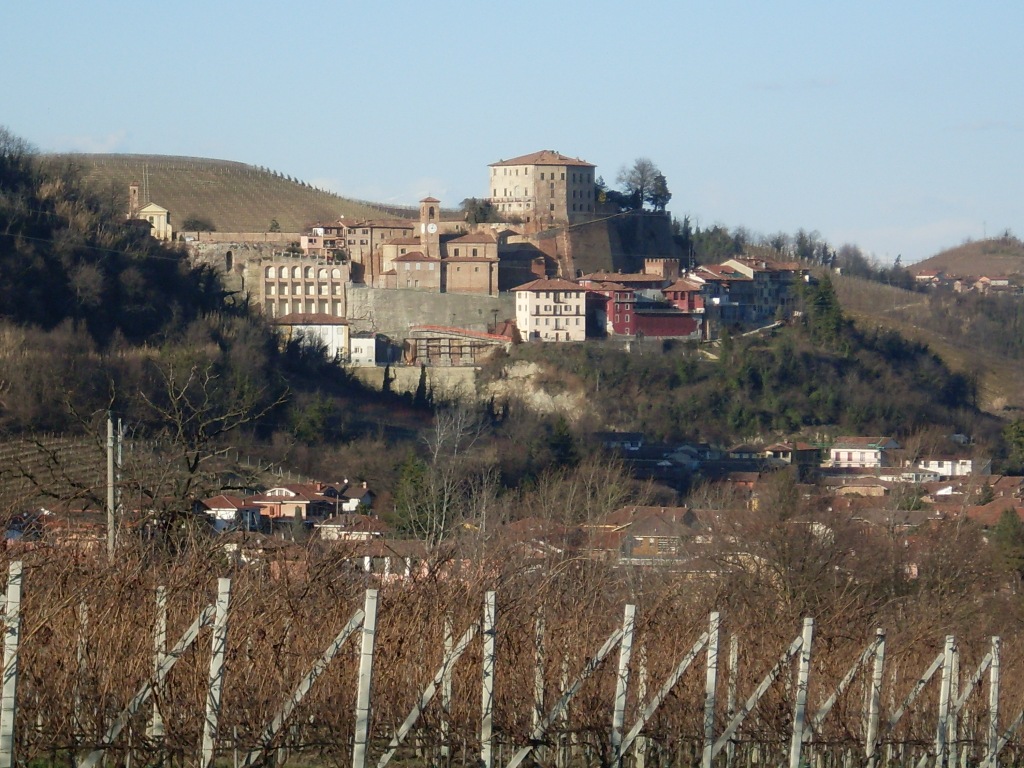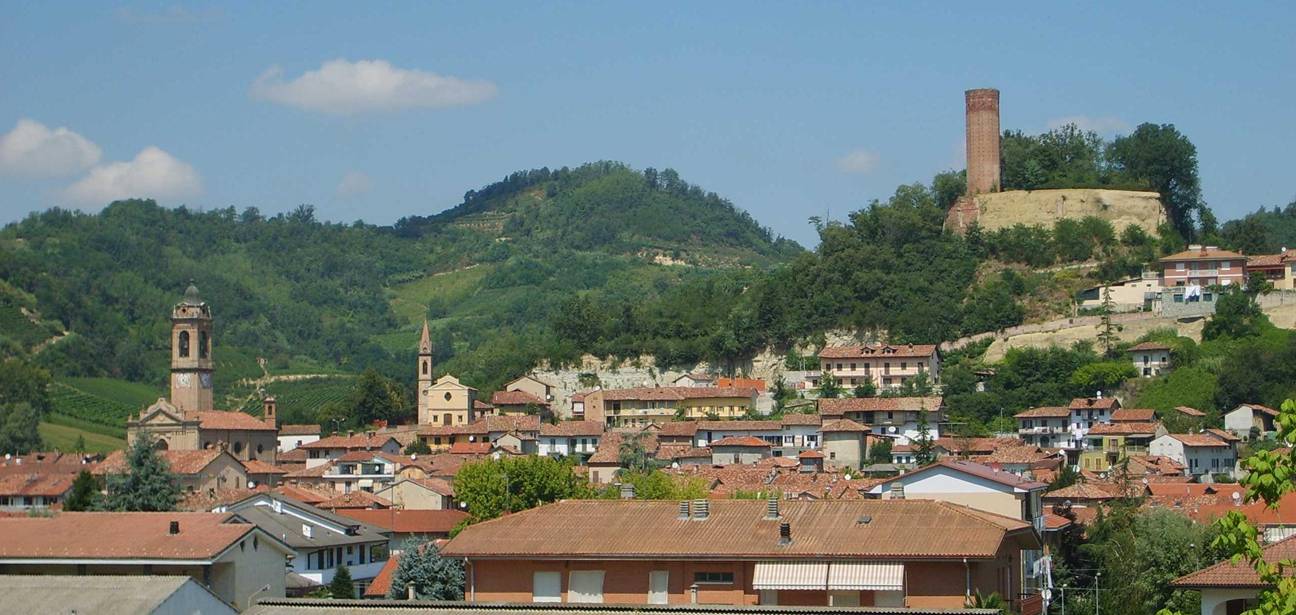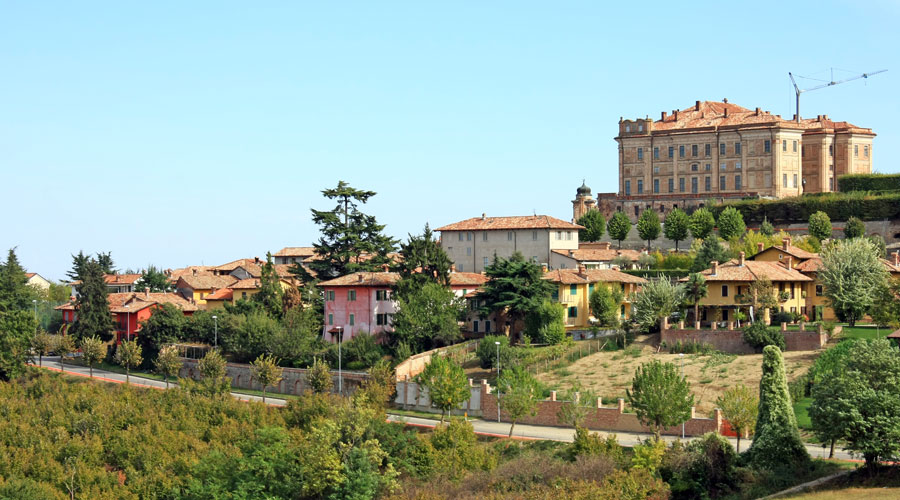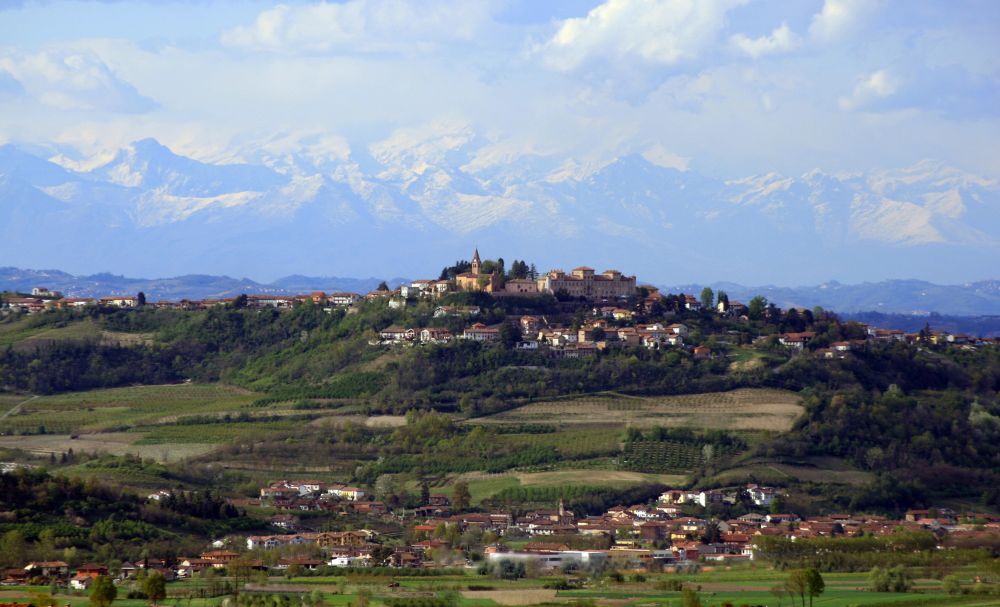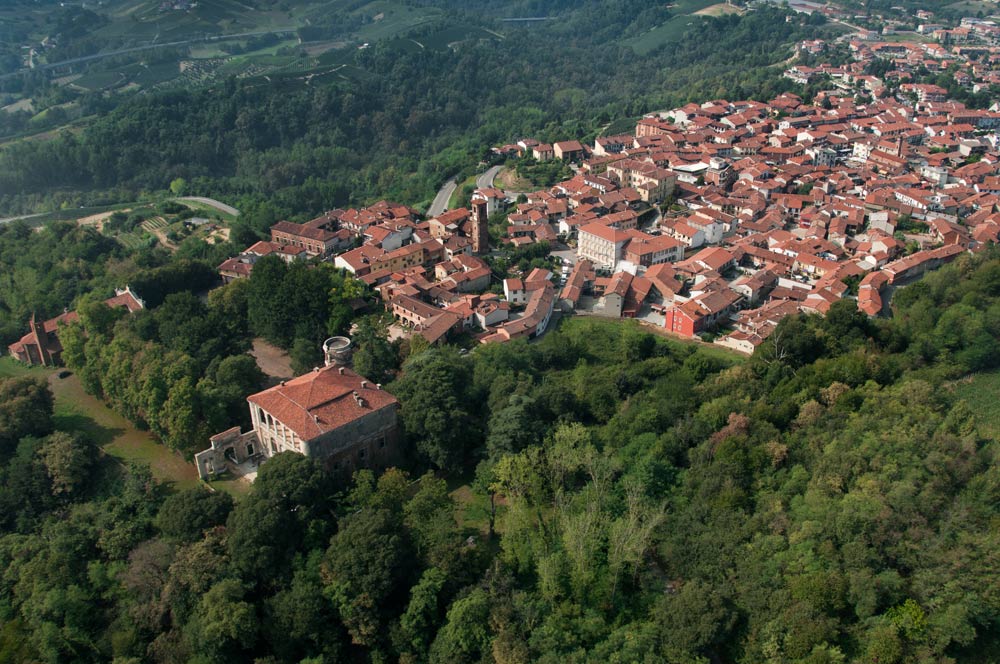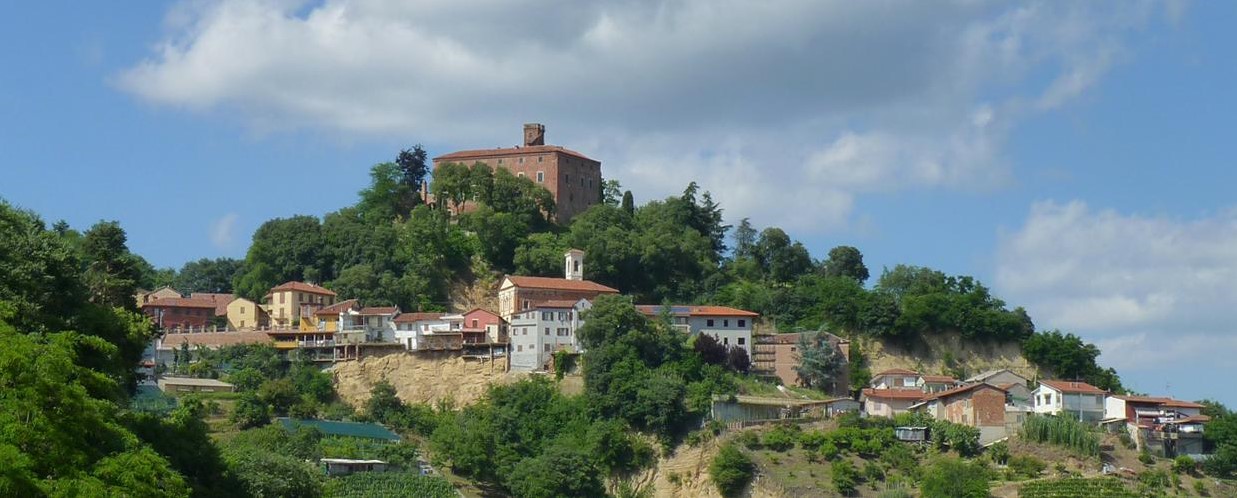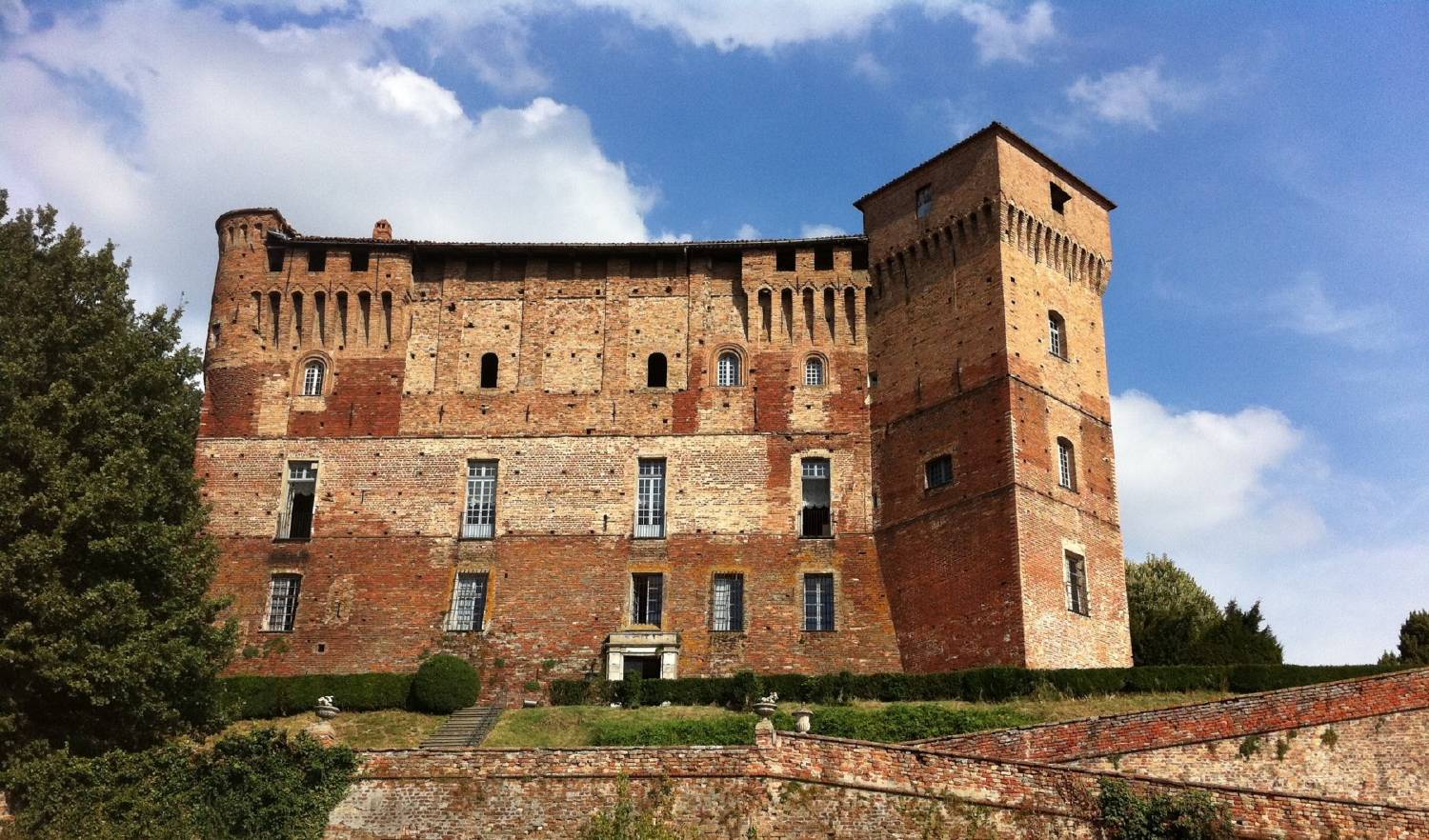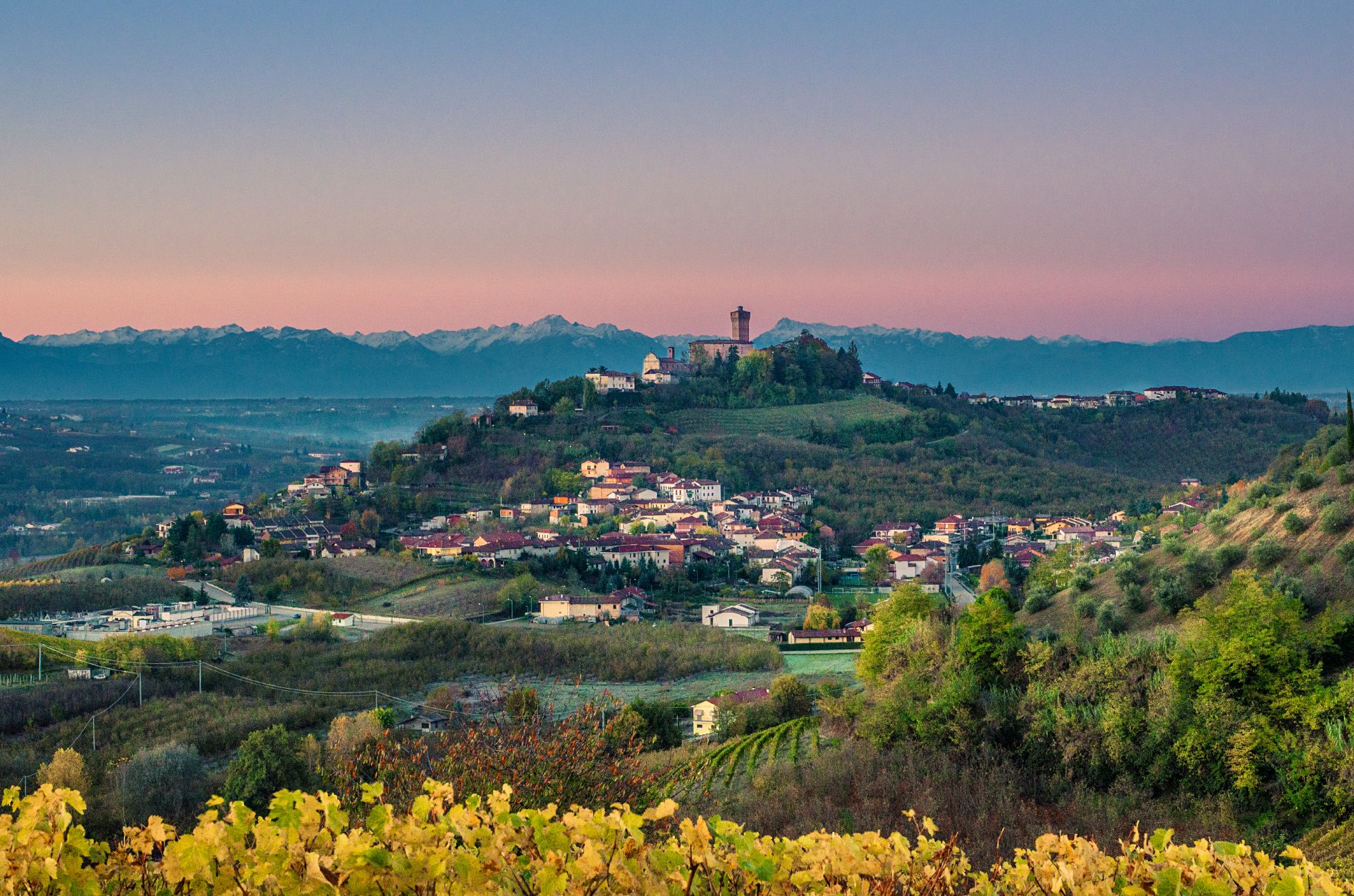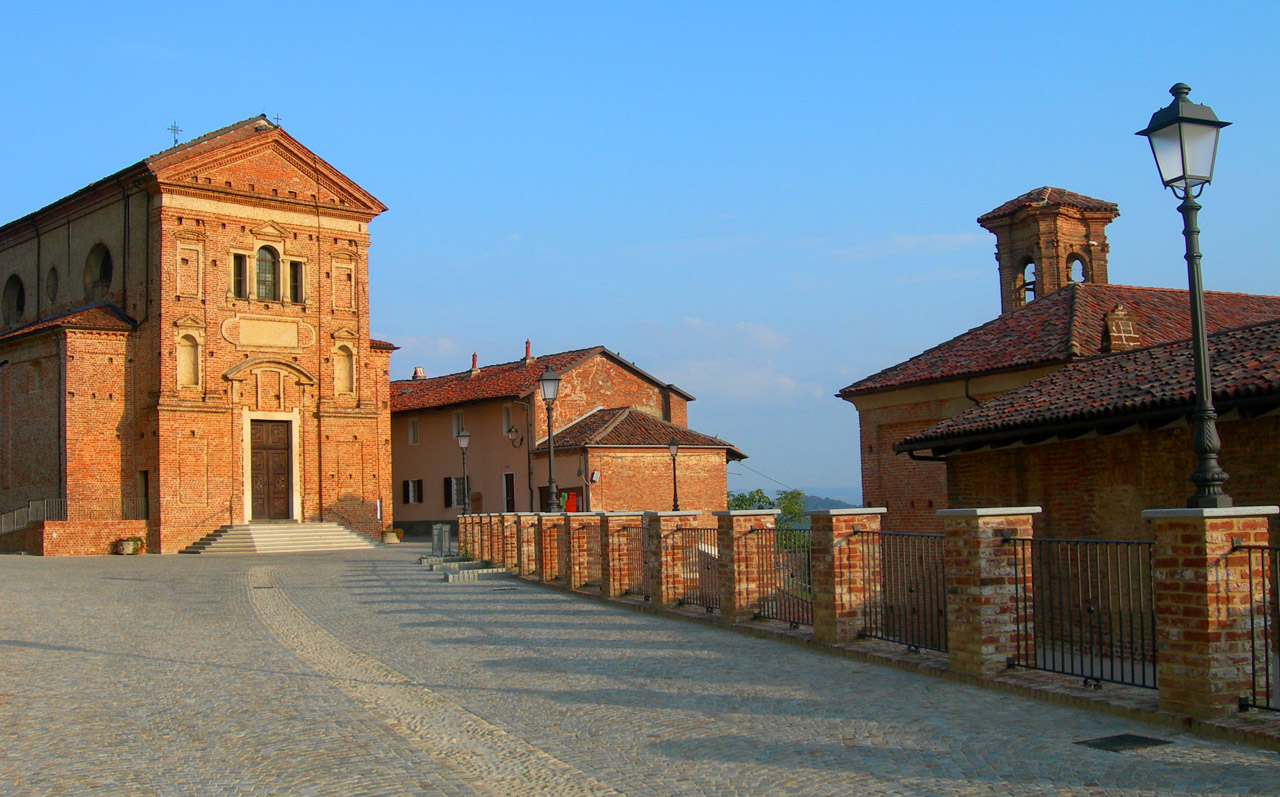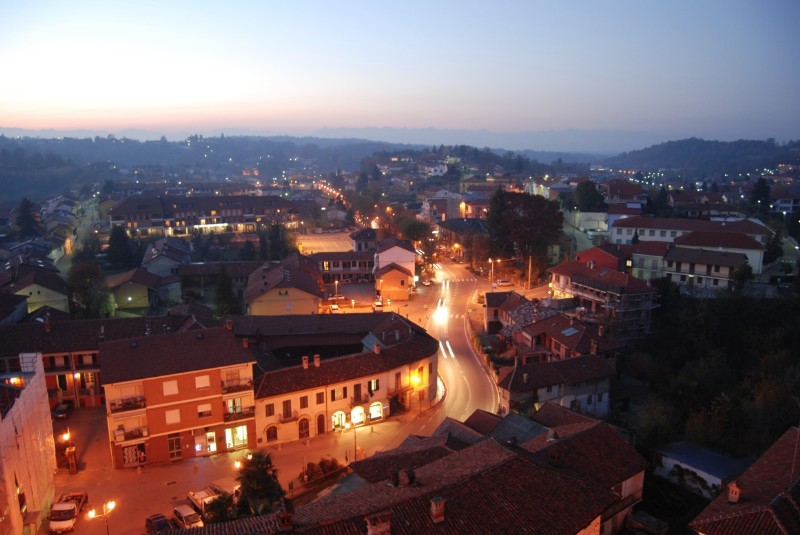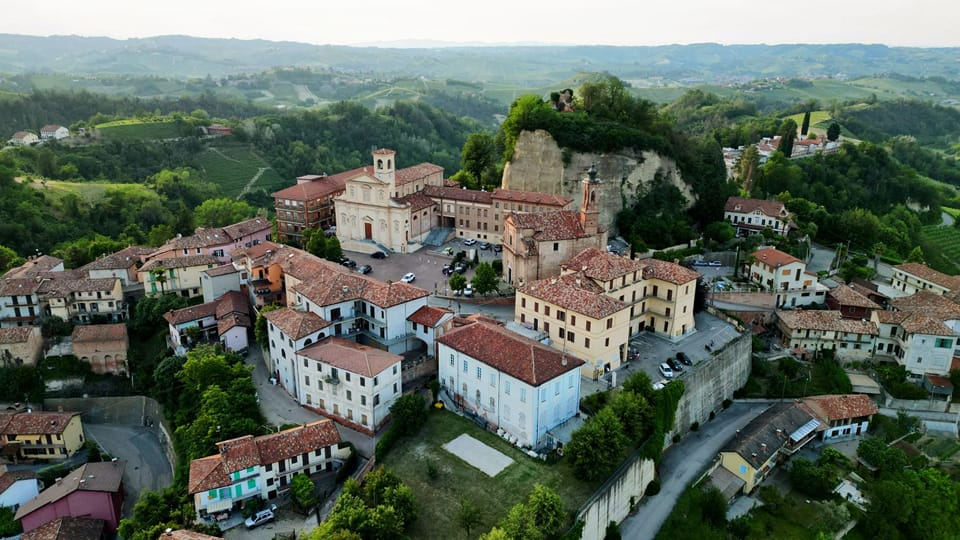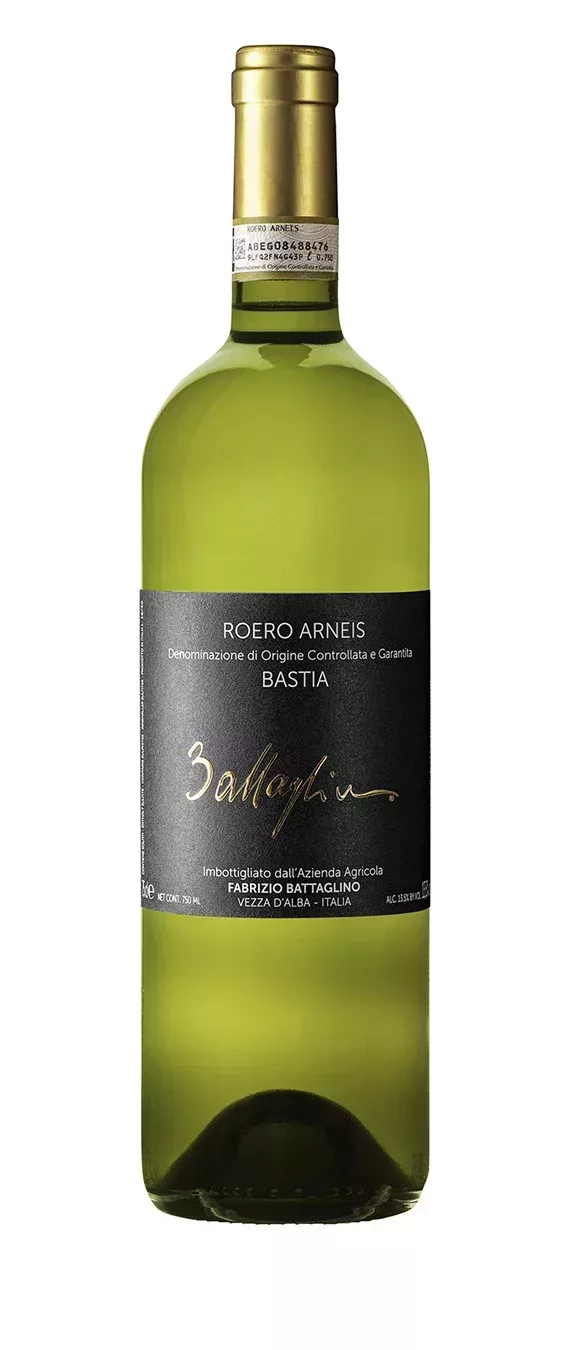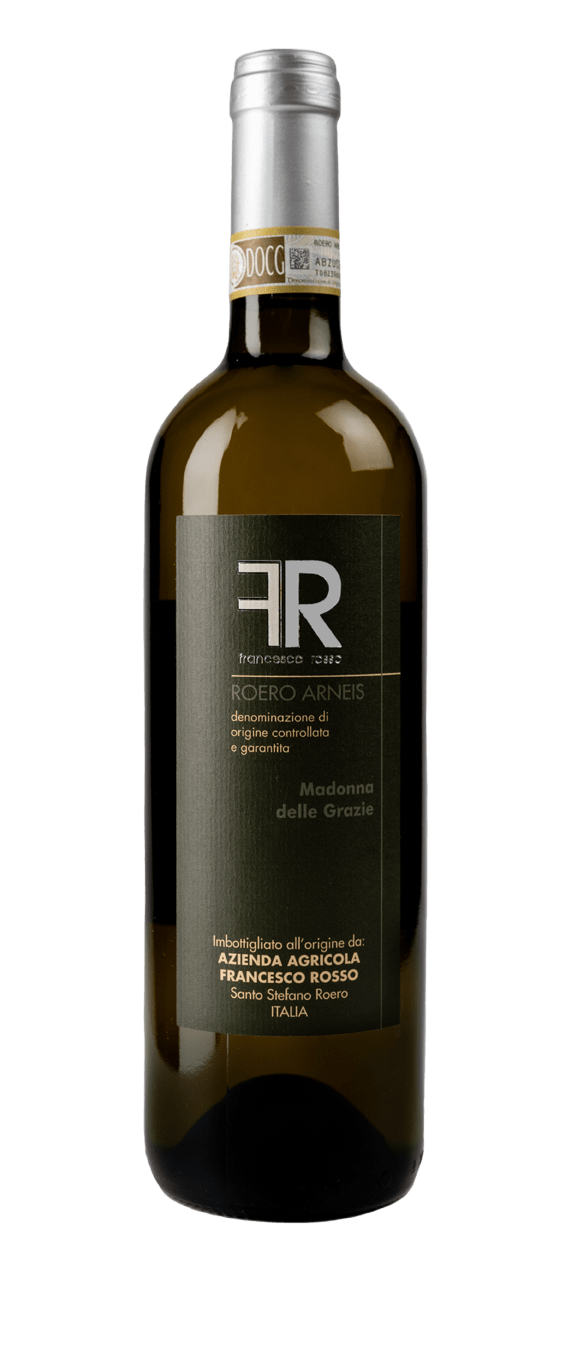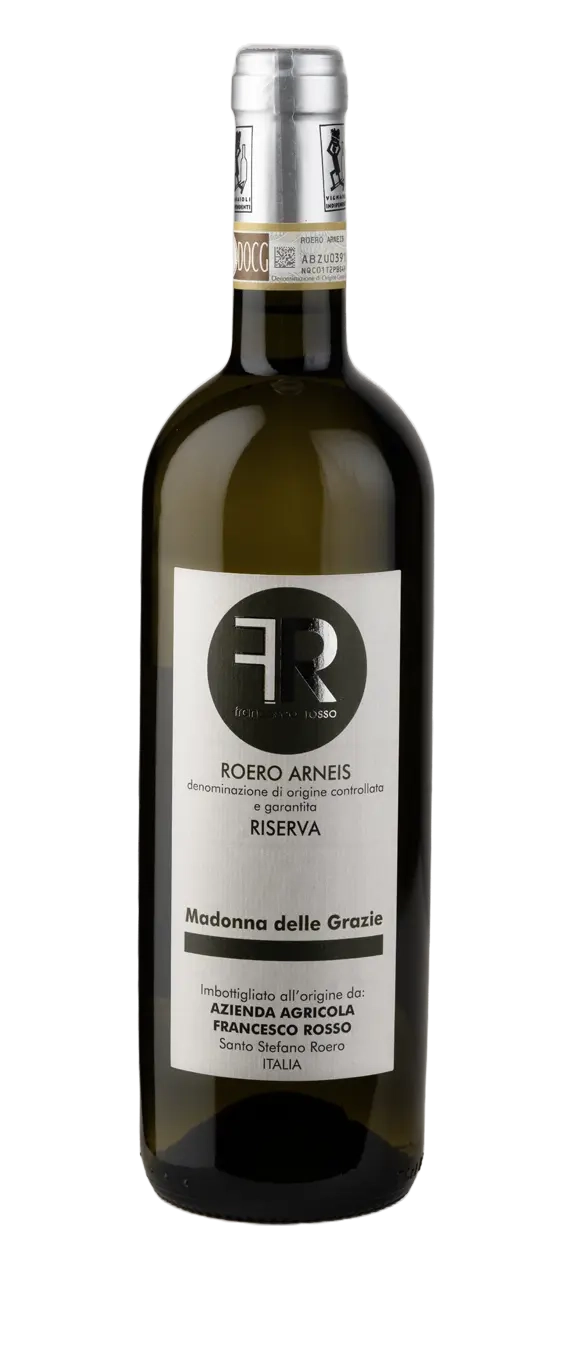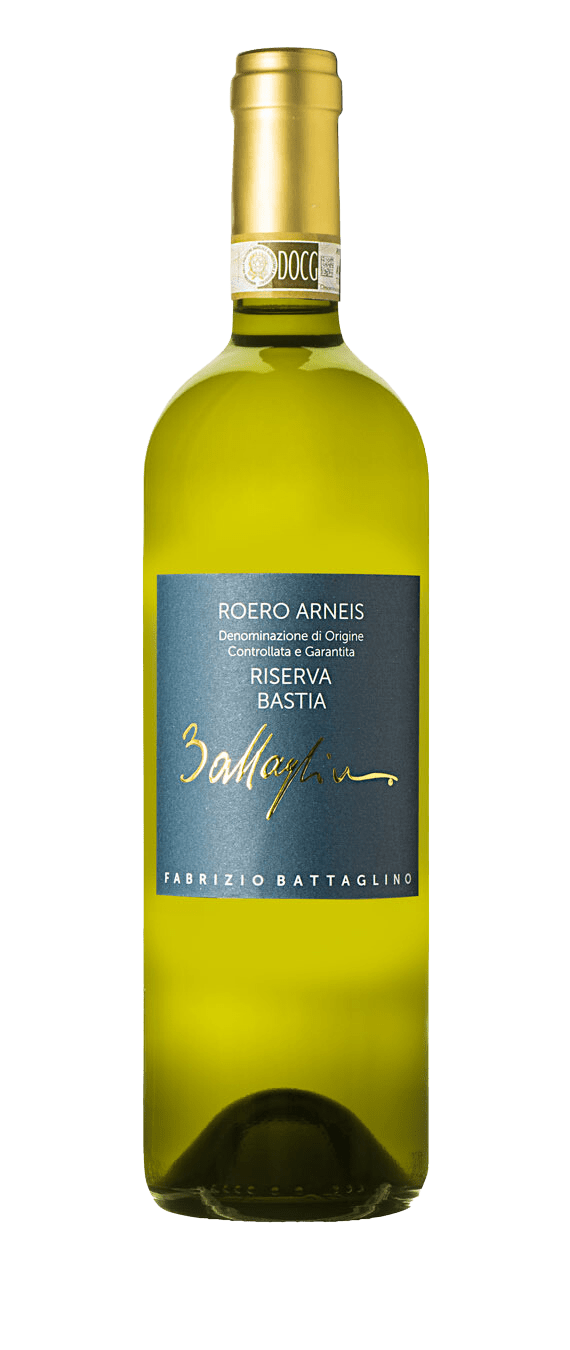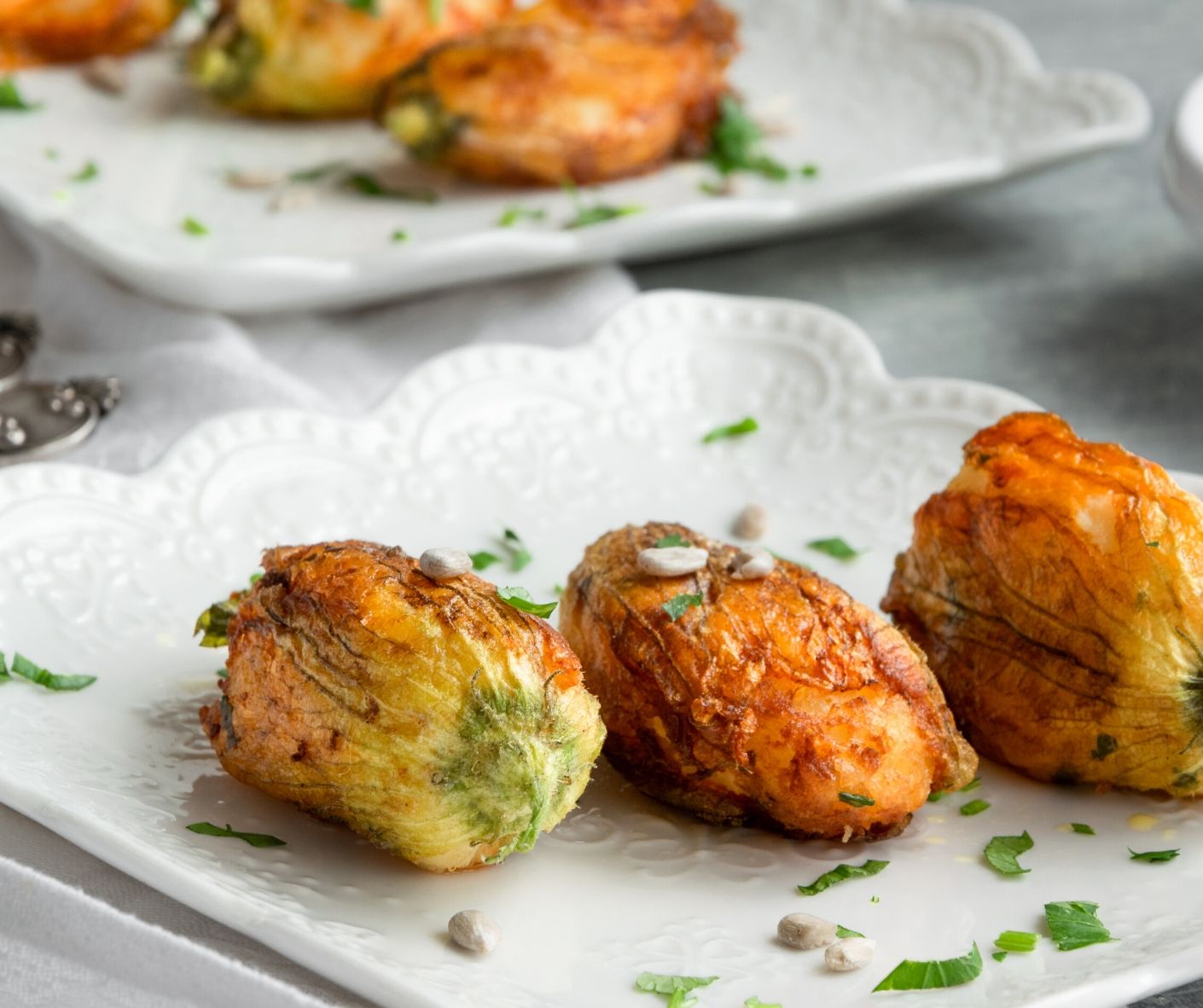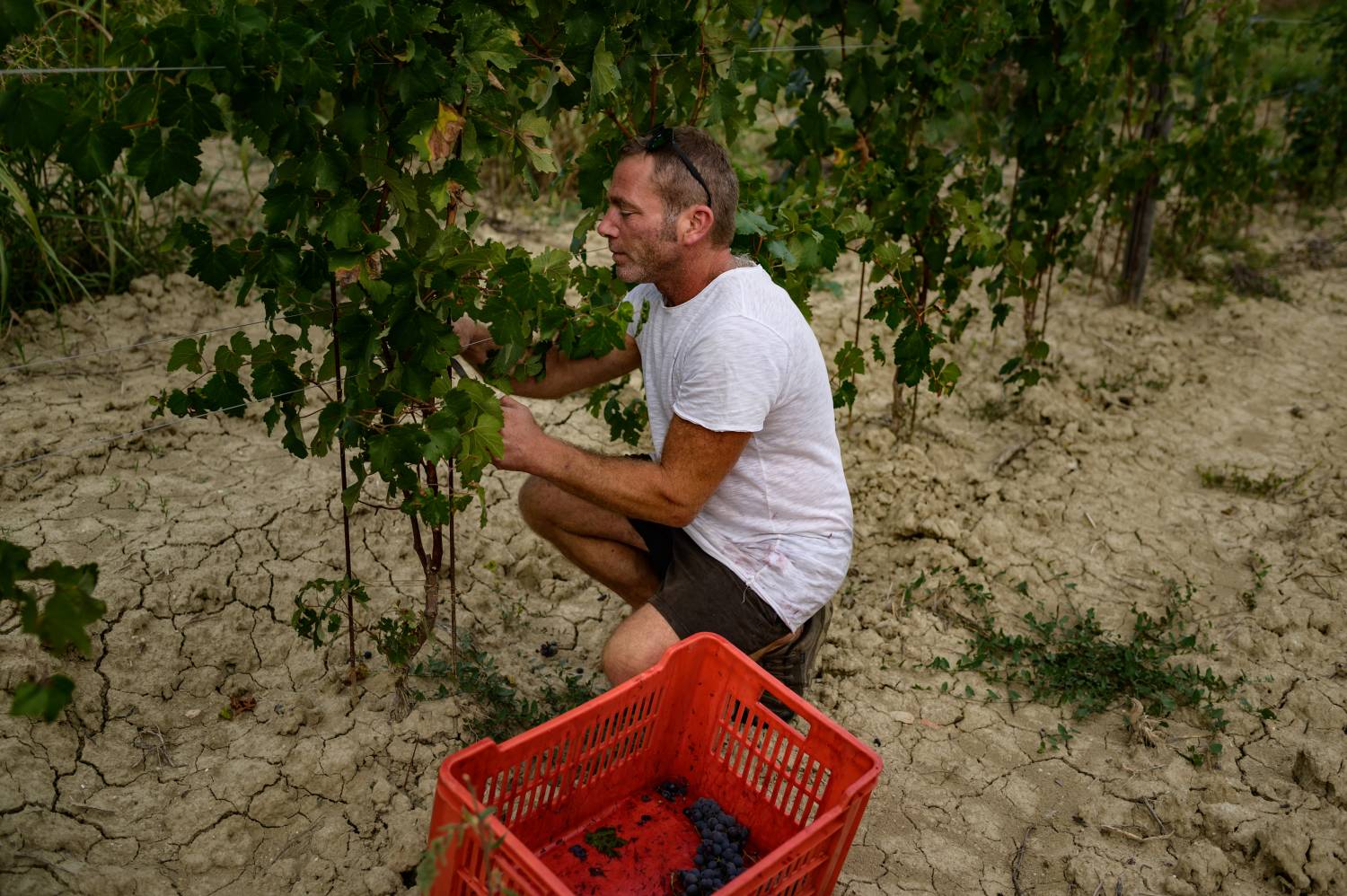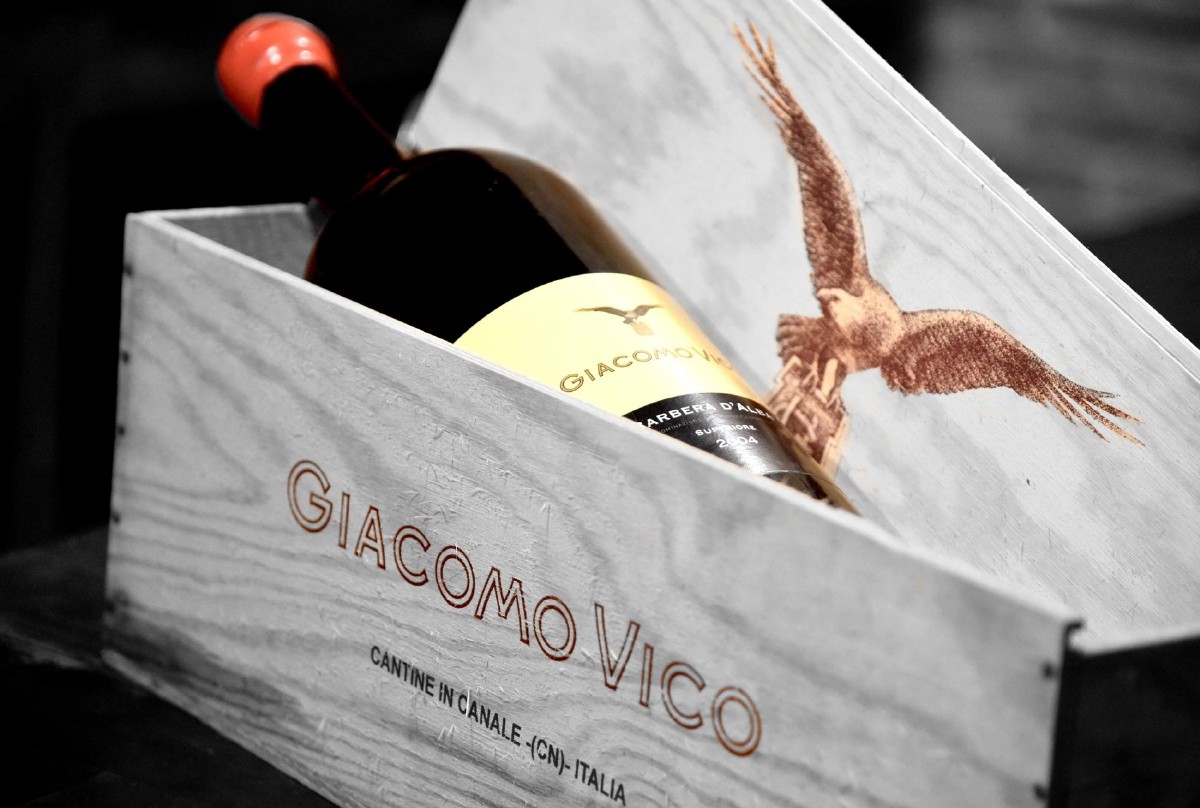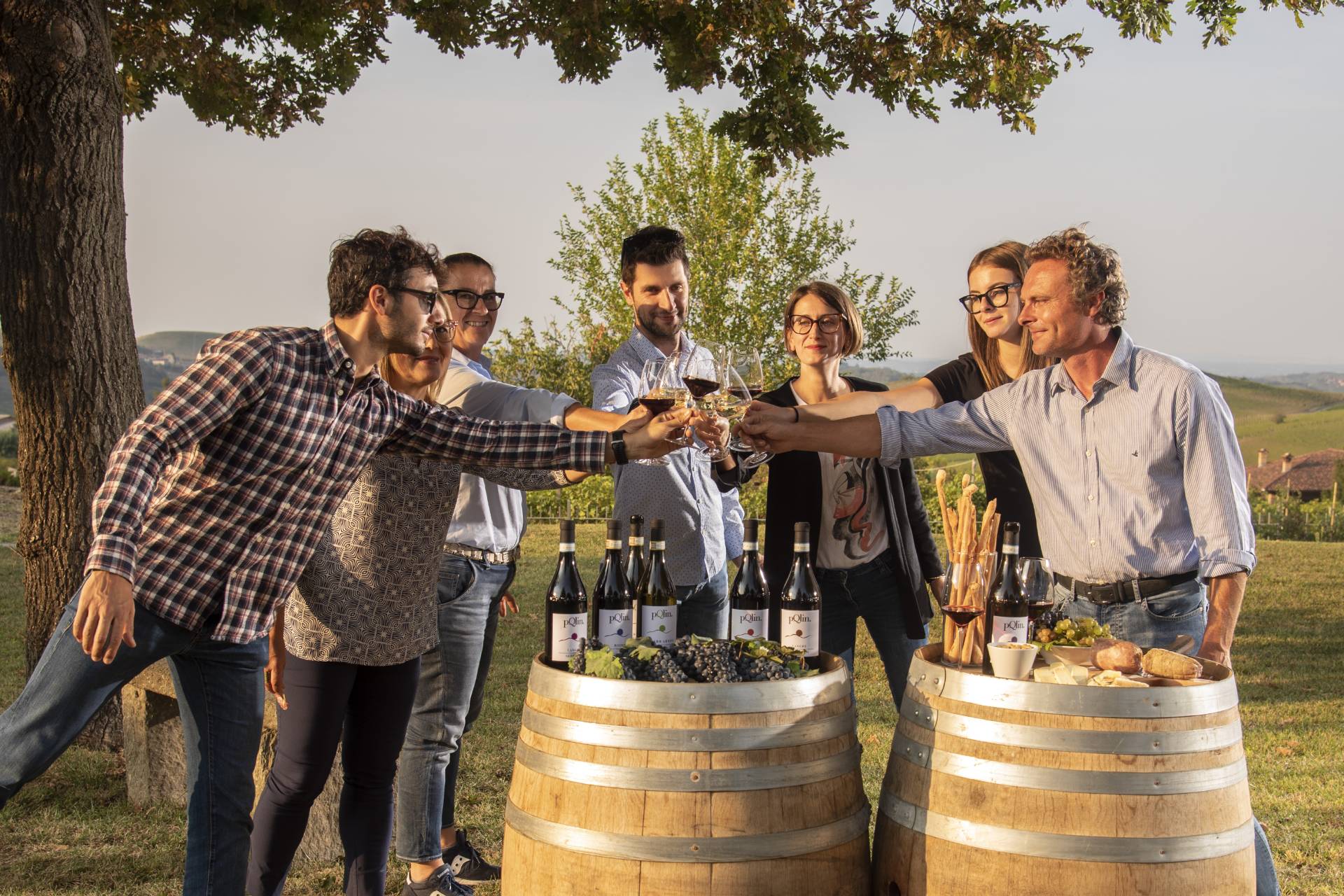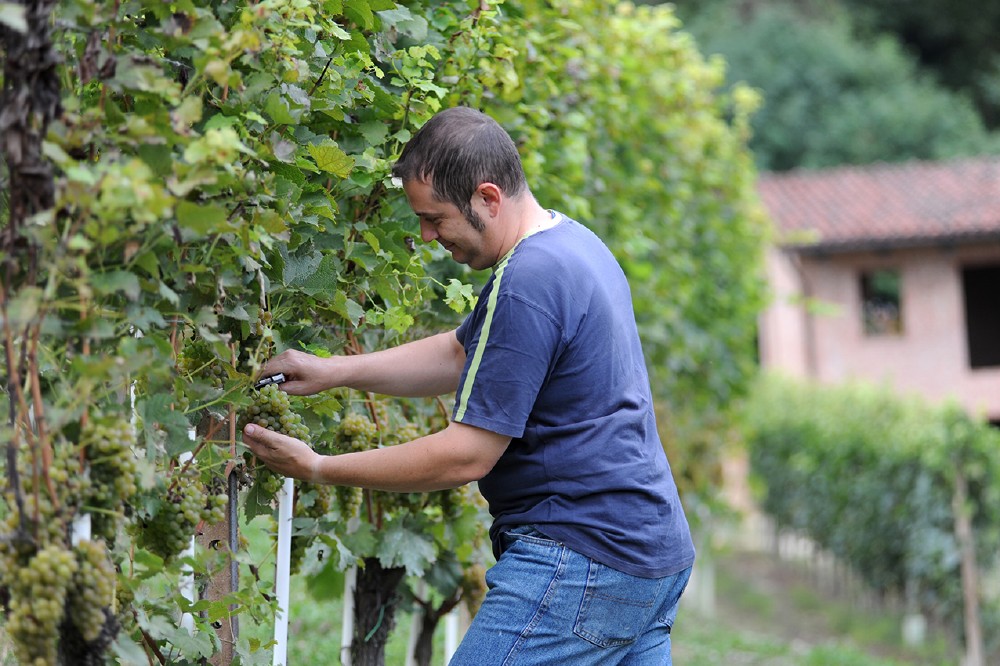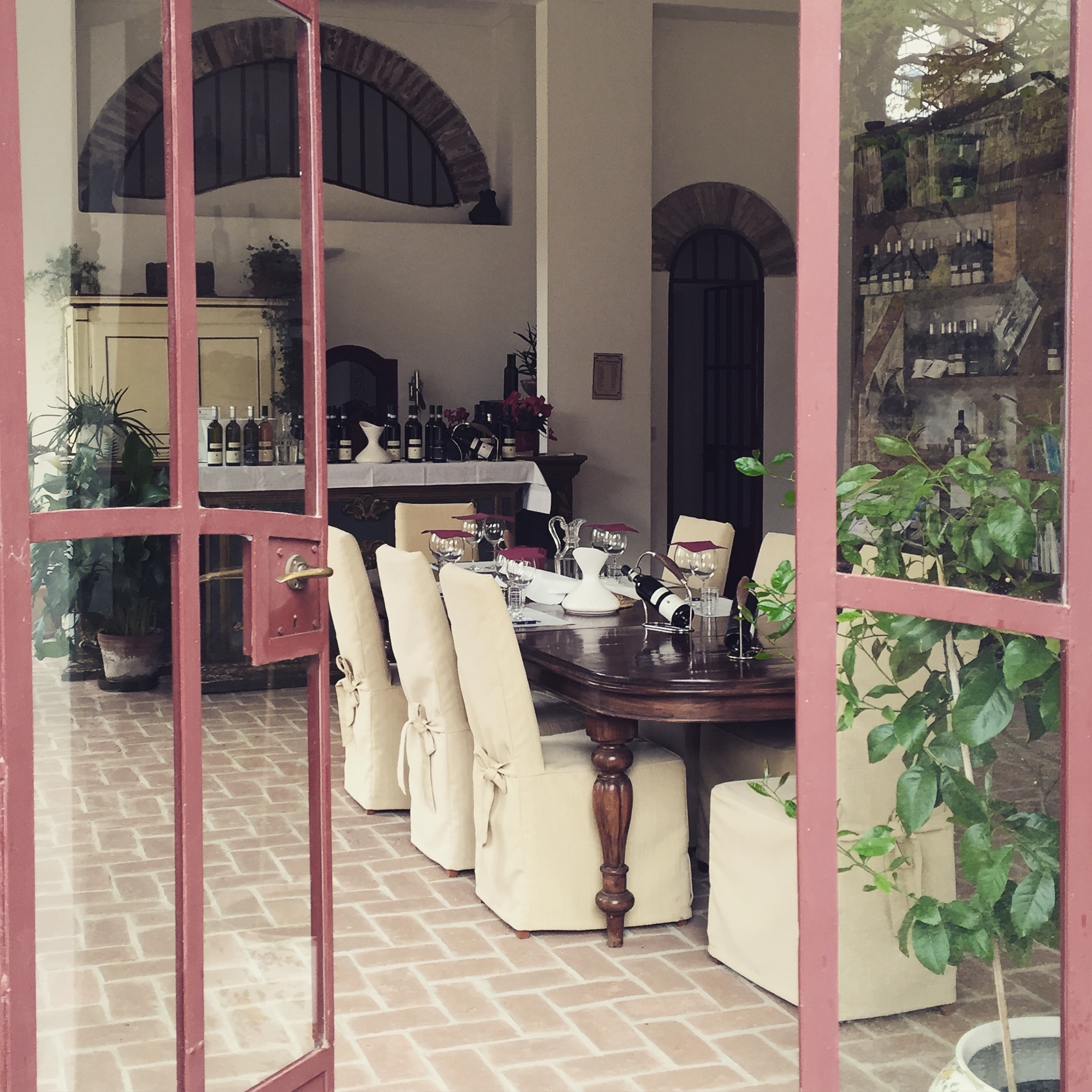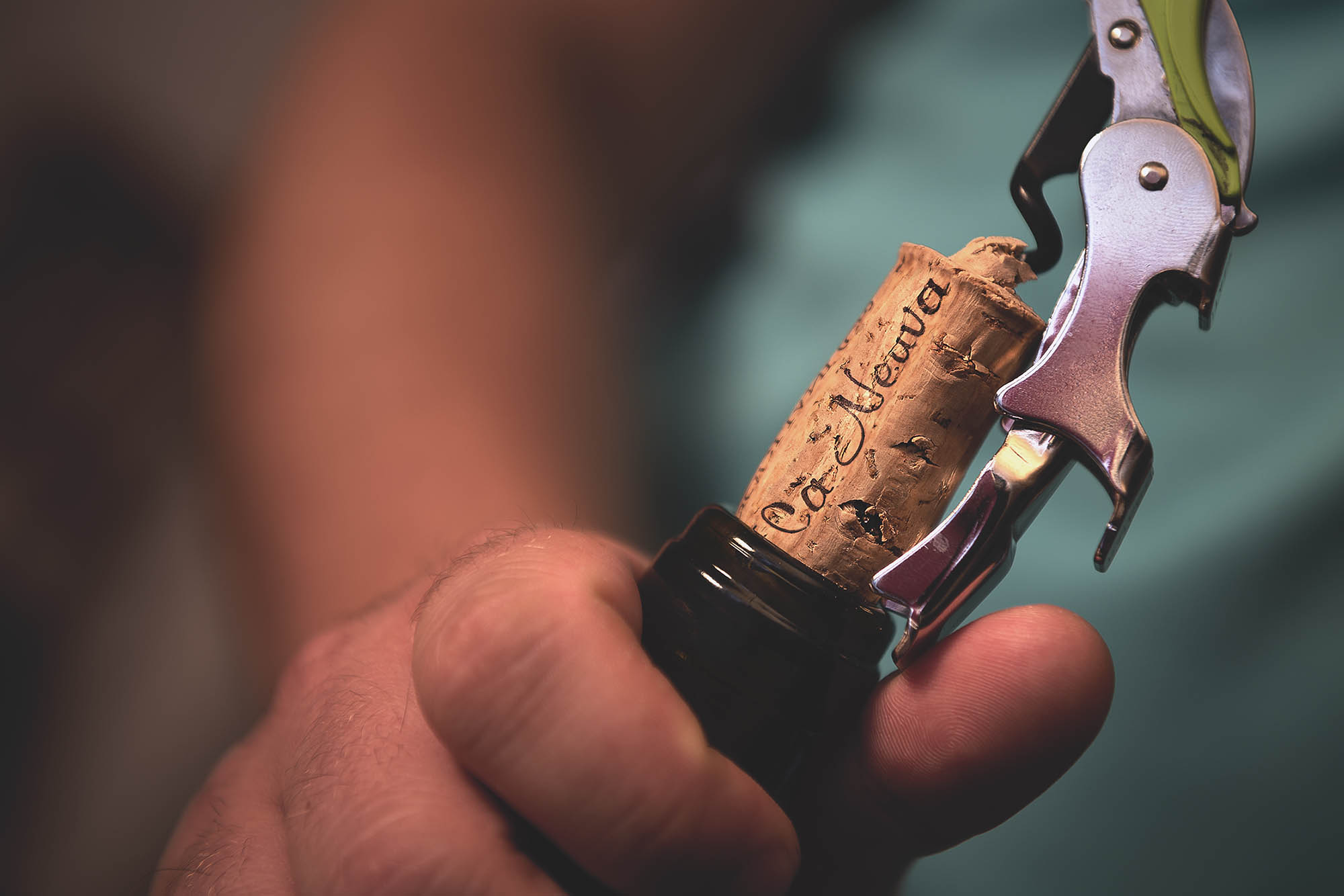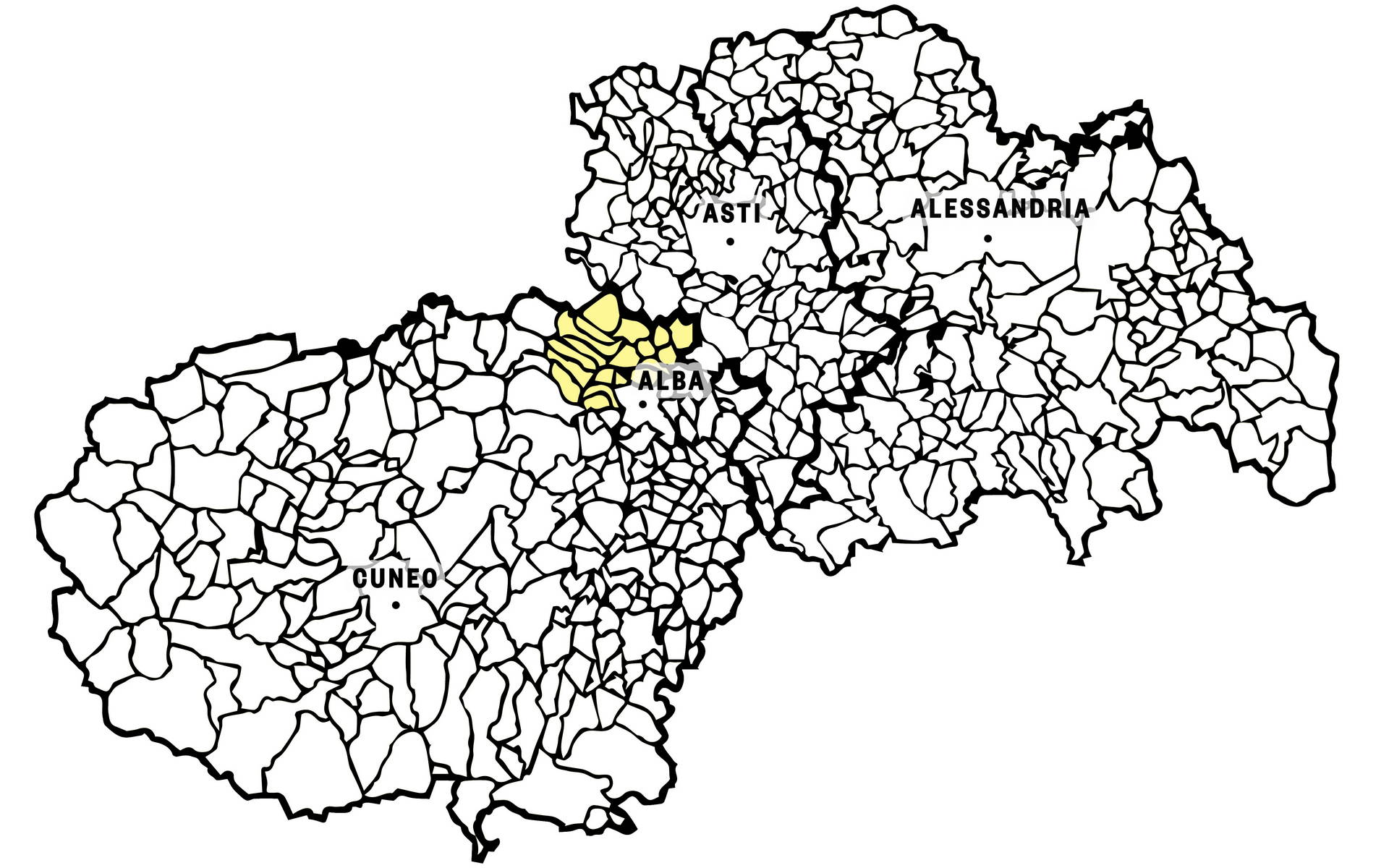
Roero Arneis DOCG
There is one more thing no one has told you about Roero Arneis. That it is a great wine.
That’s right, because reading the comments in the guidebooks of a few years ago, Arneis came out with broken bones: “a sour wine, very simple, not very fragrant, bitterish.”
It may have been true for the first – experimental – bottles, born in the 1970s-80s from the stubborn desire of producers to rediscover this historic grape variety. Since then, however, Roero Arneis has come a long way and earned its stripes in the field, being able to proudly bear its ancient appellation of “White Nebbiolo.”
From being an unknown type, used as a range completion, Arneis has risen to prominence among the great whites of Piedmont, achieving DOCG status and revealing the elegant soul of Roero.
There’s more. Roero Arneis is the wine that relaunched the native whites of an area that was thought to be good only for reds. It was the first, real step toward emancipating its hills from an uncomfortable position of subalternity to the Langhe.
Today Arnes is in full bloom. Loved by consumers for its finesse, producers have chosen it as a rebel white, an icon of a wine outside the canon, the supreme representative of the Tanaro’s “rive gauche.”
Experiments on Arneis led him to sparkling wine making with Roero Arneis Spumante DOCG. And they continued with the achievement of very long-lived types that can be appreciated over time, such as Roero Arneis DOCG Riserva.
Vines
Appellation
Color
Type
Min. alcohol
Variants
Established on
DOCG 2004
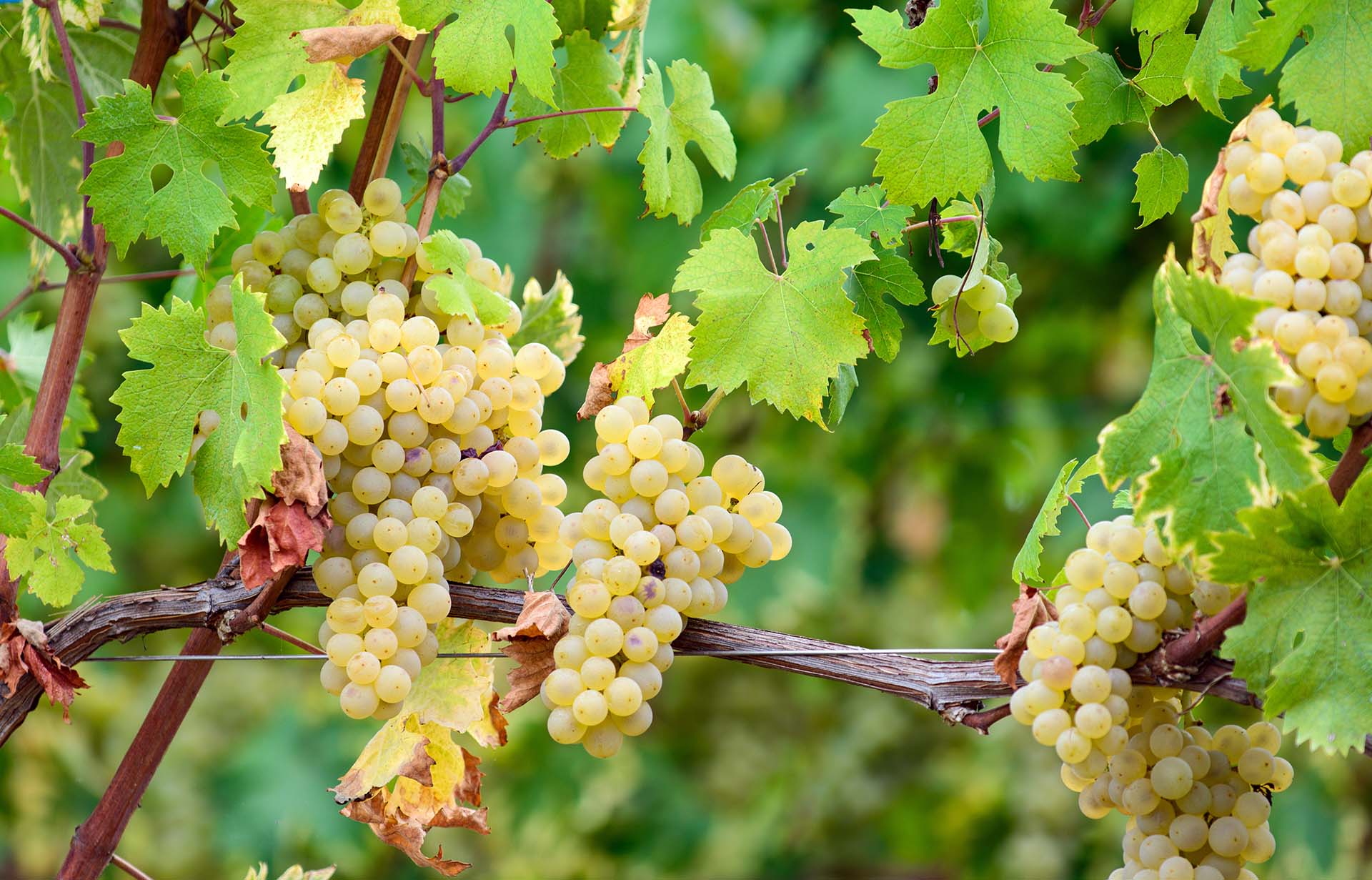
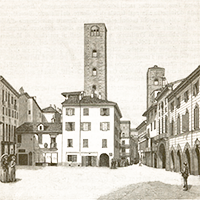
The history of Roero Arneis DOCG
While the arneis vine has been cultivated in the Roero since at least the 15th century, the wine made from it is a much more recent achievement, the child of a persistent effort to promote it since the 1970s that has saved Roero Arneis from its possible disappearance.
Arneis has never been an easy grape to grow. It requires a lot of work to be brought to proper ripeness and has poor yields. Its steep, forested hillsides do not help its spread. Perhaps this is where it gets its name, the etymology of which is still debated.
Arneis is in fact the dialect term used to describe a person with a surly, unreliable, short temper. But it is perhaps another origin to be investigated, namely the term Renexij by which, in the 15th century, the vine was referred to. This hypothesis, plausible but not certain, could be validated by a clearly identifiable toponym, the bricco Renesio behind the municipality of Canale, a town that has always been considered the epicenter of diffusion of this variety.
Of Arneis however, very few mentions are available. The contemporary name first appears in 1810 in an inventory of the cellar of the castle of Monticello belonging to the Counts of Roero. If questioned, the farmers of the past generation would have told that, of Arneis, very little was harvested and the few existing rows were interspersed with those of favorita, another typical Roero grape that was used as a table grape and sparkling wine base.
However, the mysterious history of Arneis has a certain date, 1967. It was in that year that the winemaker Alfredo Currado, fascinated by the legends about the "white nebbiolo," devised ways to obtain enough of it for winemaking. He asked the parish priest of Santo Stefano Roero to spread the word that he would buy any quantity that the parishioners would deliver. The next day, he thus received 12 quintals of grapes, mostly in small baskets, a sign that the farmers had maintained a family production of the variety. It was first vinified that year and has not stopped gaining prestige ever since.
Veronelli liked the wine and it had important reviews. It began to be replanted and promoted by roerini producers on all markets. The combined work of rediscovery and enhancement led Arneis to obtain DOC status in 1989 and then DOCG in 2004.
The merit of Roero Arneis and its pioneers is that they have never distorted it, truly succeeding in linking the wine to its territory and thus building a precise identity, now fully recognized and appreciated far beyond local borders.
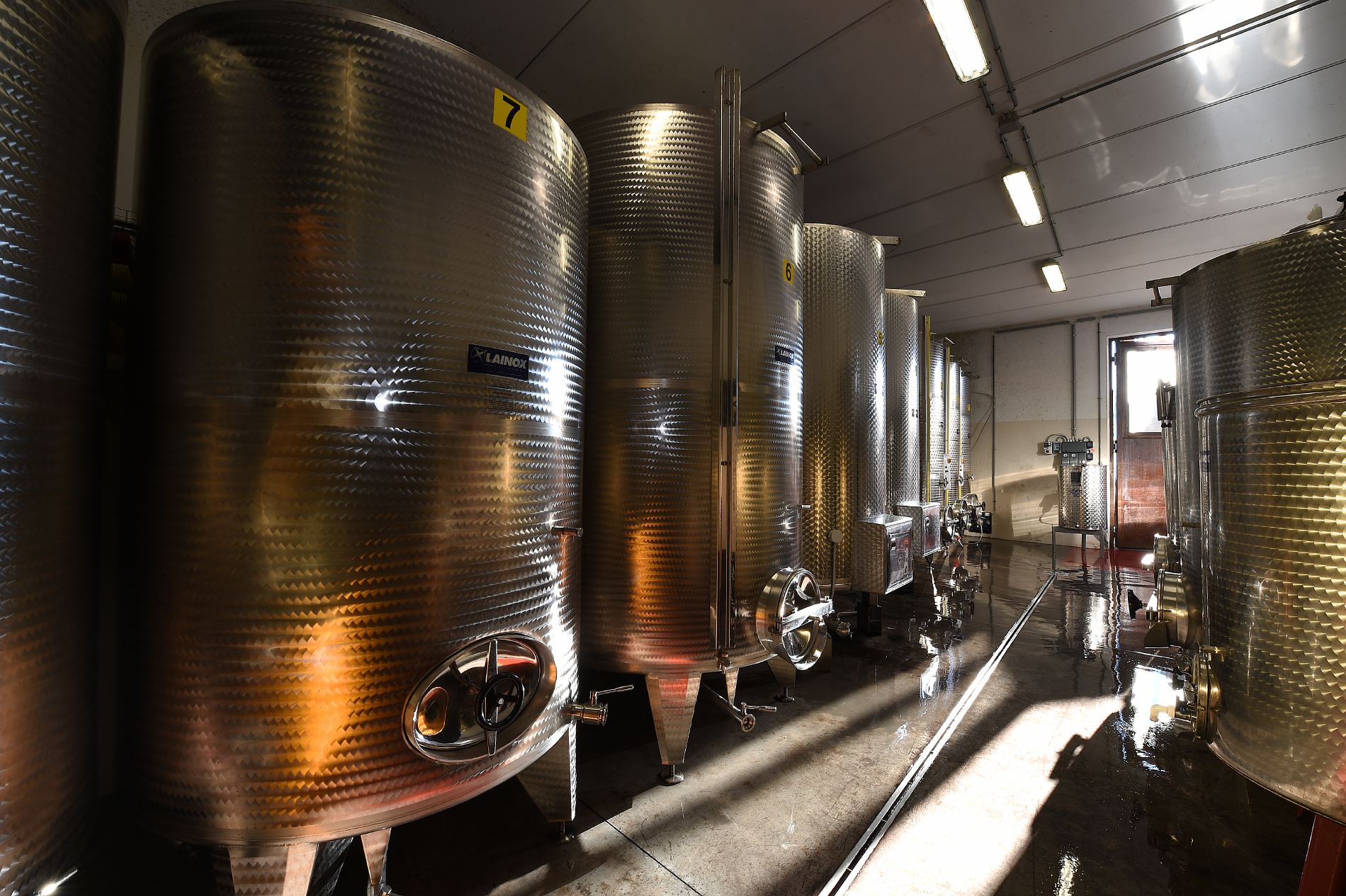
Per la produzione di vini fruttati e freschi come Dolcetto, Arneis e Rosato si predilige l’uso dell’acciaio.
Roero Arneis DOCG: Terroir
The success of Roero Arneis has been the driving force behind the rediscovery of the area where it is produced, Roero, the hilly area located across from the Langhe on the left bank of the Tanaro River.
The boundaries of the Roero, indicatively, can be drawn between Alba and Montà d’Alba, in a south-north direction, and Sommariva del Bosco and Cisterna d’Asti, in a west-east direction.
Characterized by irregular, jagged hills, the Roero is more varied than the neighboring Langa.
In addition to vineyards, one can easily find vegetable gardens, deciduous and chestnut woods, orchards, small lakes, and, above all, the Rocche, one of the area’s most striking features.
These are gullies that suddenly “break” the landscape, creating rock ramparts and canyons up to hundreds of meters deep, immediately evident because they expose the belly of the hill, composed mainly of yellow sandstones.
The soils of the Roero, while bordering those of the Langhe, are much younger. Formed in the Pliocene (between 6 and 2 million years ago), they are the result of what was once a coastal zone characterized by a tropical-type climate.
If we want to simplify, the Roero was the “beach” of the nearby Langhe, whose soils emerged from deep sea beds.
As an ancient coastal area, the soil is loose, rich in sand, generally softer and with better permeability. Peculiarities that give Roero Arneis its elegance, not too structured body, good acidity and excellent freshness.
In some areas, the sand is crossed by veins of limestone and chalk, which give the Arneis a surprising minerality.
Preferred Altitude
Preferred Soil
Crus / MGA
Towns where it's produced
Roero Arneis DOCG: Vines
The Roero Arneis DOCG is a single varietal wine, and therefore can be made exclusively by Arneis grapes
This vine is a found all over the Roero but also on the hills on the right bank of the Tanaro. It is extremely vigorous, with strong, straight shoots. Fertile and productive, the grapes ripen in late September. The bunch is medium to small in size, with a pyramid or cylindrical shape with one or two obvious wings. In recent... you can read more about Arneis here.

Roero Arneis DOCG: Features
Roero Arneis is a classy white.
Fresh and fragrant, harmonious and balanced, it reveals the elegant soul of the Roero hills.
A dry white, with a typical slightly almondy note that expresses itself in pleasant notes of yellow fruit and goes well with Mediterranean cuisine, especially fish.
Fineness and floral character are its distinctive notes, along with a mineral sip that makes drinking even more enjoyable.
Sight
Roero Arneis is straw yellow in color with greenish highlights that turn amber in the Riserva version.
Nose
Yellow fruit and white flowers are the most prominent notes.
Among fruits, peach, apricot, apple, and pink grapefruit can be distinguished. Among flowers, chamomile and acacia flowers.
Taste
In the mouth, Roero Arneis is dry, fresh and delicate. Notes of ripe pear, apricot, citrus stand out.
The finish is long, with an almondy undertone on which a fair bit of acidity is inserted.
Some Arneis born on chalky, calcareous soils stand out for their obvious minerality.
Official regulation
Color
Perfume
Taste
Foam
Get a bottle directly from the producer
LoveLanghe Shop is a niche of great wines from the Langhe area: some unknown to most, some already quite recognized but perhaps hard to find in the big distribution, others in which we see potential but that have yet to grow.
Bottles are shipped directly from the winery to your home, with no intermediary.
Service
Roero Arneis should be served chilled. A temperature of 8-10°C is recommended.
The best glass for tasting is the tulip-shaped goblet that helps to emphasize the bouquet of the wine.
The tulip goblet is also perfect for Arneis Riserva while for the sparkling type, flûte is recommended.
Roero Arneis DOCG: what to pair it with
Excellent as an aperitif, it pairs masterfully with fish dishes. It loves raw seafood, fried foods, carpaccio, grilled octopus and fish baked in foil.
It goes well with all types of risotto, summer pastas and white meats.
Among cheeses, it is best to choose fresh and medium-aged ones.
Perfect with grilled vegetables, soups and salads.
Recipes to pair with Roero Arneis DOCG
Roero Arneis DOCG: Production
In 1990, there were 173 hectares planted with arneis to produce Roero Arneis. In 2000, 453. Today the total acres exceed 900 for about 6 million bottles produced each year.
The vine is moderately early and reaches full ripeness in the second half of September.
Once harvested, the grapes are pressed with immediate separation from the skins to avoid the formation of overly vegetal hints (although, lately, there are excellent examples of Roero Arneis macerated on the skins).
The must is pressed, and only the first few pressings are made into wine, resulting in decidedly finer wines.
The Arneis ferments at a controlled temperature in steel tanks.
Some producers conduct a long fermentation, which can last up to two months, to let the varietal aromas of the grape variety, especially the fruity and floral scents, express themselves even more clearly.
After aging for at least 4 months (which becomes 16 for the Riserva version), it can be released on the market. Some producers, especially for the Riserva version, are experimenting with some passages in wood, with excellent results. There is also a sparkling version of Roero Arneis, which is mainly made with the Charmat-Martinotti method, that is, refermentation in autoclaves.
Time in wood
Time in bottle
Time to market
Grapes Yield
Meet the producers
Curiosities
Roero Arneis, like other important wines from the area, can carry Additional Geographical Mentions on the label.
The Consorzio di Tutela del Roero, established in 2014, is carrying out an important zoning effort to highlight the many nuances this wine acquires based on the areas where it is planted.
Following the example of wines such as Barolo and Barbaresco, after 8 years of work the map of the MeGa del Roero, or Additional Geographical Mentions, was born.
The Mentions allow producers to identify wines from the vineyards of a specific territory on the label and help consumers understand the differences between labels produced in different areas.
There are 135 MeGa of Roero, of which 19 are communal (i.e., they bear the name of the commune to which the vineyards belong) and can be listed on the label.



















